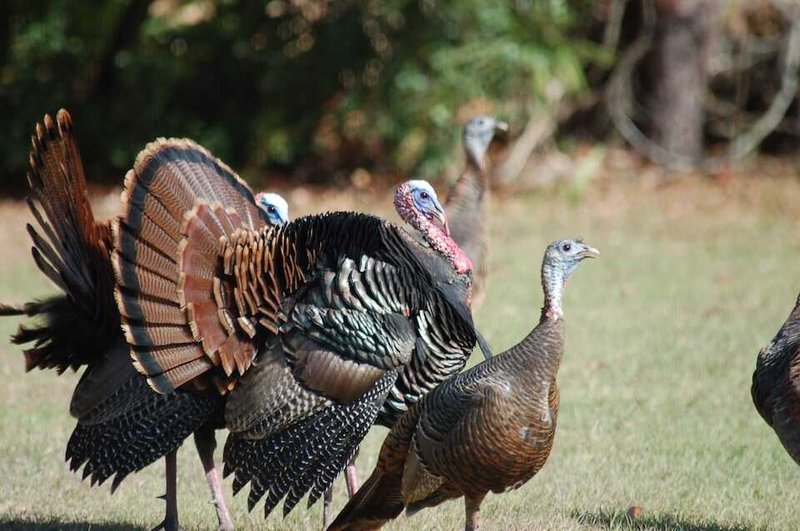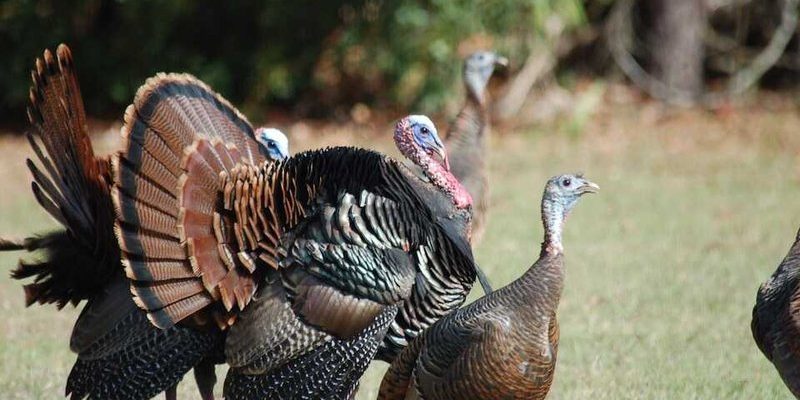
Turkeys are unique creatures that showcase a wonderful blend of instinct and learned behaviors. They have evolved over time to fit into a variety of habitats, from forests to grasslands. Their ability to adapt isn’t just about surviving; it’s also about thriving in their environment. Have you ever wondered how these birds find food, avoid predators, or even handle changes in climate? Let me explain some key ways turkeys adapt to their surroundings and what this means for their survival.
Physical Adaptations of Turkeys
Turkeys have some impressive physical features that help them adjust to their environment. One of the first things to notice is their feathers. These birds have a unique feather structure that allows them to blend into their surroundings. This camouflage is crucial when you’re trying to avoid being someone’s dinner.
Some turkeys have a darker plumage, which can help them stay hidden in wooded areas, while others might be lighter to blend in with more open fields. Their feathers aren’t just for looks, either. They also provide insulation, keeping turkeys warm in chilly weather. This ability to regulate their body temperature is a fantastic example of how turkeys have adapted to varying climates.
Moreover, turkeys have strong legs and a broad body, which help them run quickly and navigate different terrains. If you’ve ever seen a wild turkey sprint across a field, you know they can move pretty fast when they need to—especially when there’s danger nearby!
Behavioral Adaptations
Behavior is another area where turkeys shine in terms of adaptation. For example, turkeys are social creatures that often gather in flocks. Being in a group helps them stay safe from predators. When one turkey spots a threat, it can alert the others, and they can all take off together. This teamwork is essential in the wild!
Turkeys also change their feeding habits based on what’s available in their environment. In the autumn, you might find them foraging for acorns, while in spring, they might be munching on fresh greens or insects. Their diet is adaptable, allowing them to take advantage of seasonal food sources. Honestly, it’s impressive how they can shift their eating habits to get the nutrients they need.
Another behavior that showcases this adaptability is their nesting habits. Turkeys usually nest on the ground, which might seem risky, but they’ve developed strategies to keep their eggs safe. They often choose secluded spots and create a bit of a nest to hide their eggs, demonstrating cleverness in their reproduction strategy.
Habitat Adaptation
Turkeys are found in a variety of habitats, which speaks to their adaptability. From dense forests to open grasslands, they’ve carved out a niche in different environments. This versatility is vital for their survival, as it allows them to migrate and find suitable places to live based on food availability and weather changes.
In forested areas, turkeys often utilize tree cover for safety and foraging. They roost in trees at night, providing protection from predators like coyotes and raccoons. In open fields, they can take advantage of the space to find food and spot any potential dangers from afar.
One fascinating aspect of their habitat adaptation is their seasonal behavior. In the colder months, turkeys may congregate in areas where food is more plentiful and seek shelter from harsh weather. This seasonal movement demonstrates their ability to read the landscape and make smart choices for survival.
Social Structure and Communication
The social life of turkeys is another example of how they adapt to their environment. These birds are known for their complex communication skills. They use a wide range of sounds to convey messages to each other, whether it’s warning about danger or attracting mates during the breeding season. Think of it as their own turkey language!
Their social structures also help them cope with challenges. Young turkeys often stay close to their mothers, learning from her about finding food and avoiding threats. This nurturing behavior not only allows for better survival rates for the young ones but also ensures that the necessary skills are passed down.
Turkeys also demonstrate fascinating group dynamics. When they feel threatened, they can band together to intimidate a predator and make themselves seem less vulnerable. This behavioral adaptation is essential in keeping them safe from harm.
Adaptation to Predators
Speaking of threats, turkeys have developed several strategies to deal with predators. As ground-nesting birds, they need to be particularly cautious about threats from above and below. This is why they often choose nesting sites that are concealed by vegetation, allowing them to stay hidden.
When turkeys sense danger, they employ a mix of vigilance and flight. Their keen eyesight allows them to spot predators from a distance. If they detect something suspicious, they can quickly take to the air or run to a safer area. Turkeys can fly up to about 200 feet in the air, making it a great escape plan when necessary.
Moreover, their flocking behavior helps them confuse predators. When a group of turkeys scatters, it can be tough for a predator to target just one bird. This ability to evade capture is a significant factor in their success as a species.
Climate Adaptation
Lastly, let’s talk about how turkeys adjust to changes in climate. With variations in temperature and weather patterns, these birds have shown remarkable resilience. For instance, during colder months, turkeys have been observed to gather in larger numbers, seeking warmth and shelter together.
In areas where the climate is changing, turkeys have adapted by altering their migration patterns. They may move to higher elevations or different territories to find suitable food sources and avoid harsh weather conditions. It’s remarkable how they can sense these changes and adapt their behavior accordingly.
Additionally, turkeys can adjust their plumage according to the season. In summer, their feathers may be lighter to keep cool, while in winter, they become denser for warmth. This physical response to climate is another way they demonstrate their adaptability.
To wrap it all up, turkeys are much more than just a holiday icon—they’re incredible survivors in a variety of environments. From their physical traits to their social behaviors, their adaptability is a powerful testament to nature’s ingenuity. Whether it’s blending into their surroundings or working together to fend off threats, turkeys show us that survival often hinges on the ability to adapt.
As you think about these fascinating birds, remember that their skills and behaviors are just as important as their delicious taste. The next time you hear a turkey call or spot one in the wild, take a moment to appreciate the clever ways they navigate their world. Whether it’s in dense forests or open fields, these birds are thriving, and that’s something worth celebrating.

